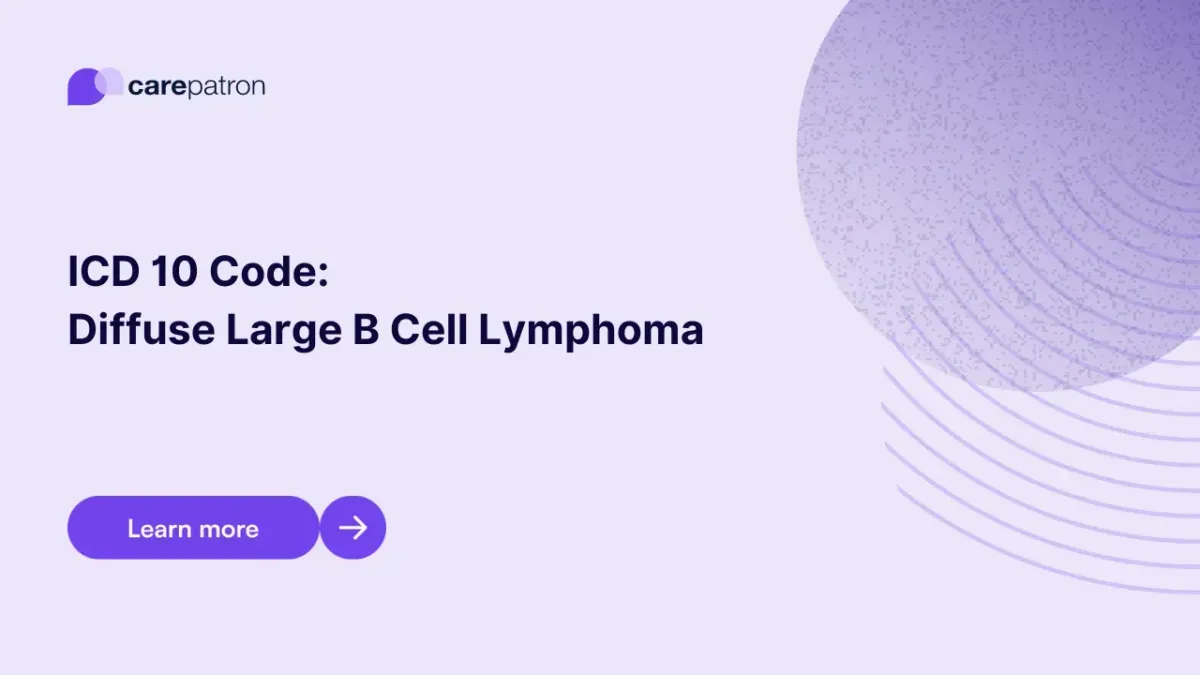
Diffuse Large B Cell Lymphoma ICD-10-CM Codes | 2025
Explore updated 2025 ICD-10-CM codes for Diffuse Large B Cell Lymphoma, including billable diagnoses, remission codes, symptoms, and treatment options.
Use Code
Commonly asked questions
Use a Diffuse Large B Cell Lymphoma ICD-10 code when a patient has a confirmed diagnosis of DLBCL through biopsy and clinical evaluation. The specific code should reflect the site of involvement, remission status, or subtype to ensure accurate documentation and billing.
Yes, most Diffuse Large B Cell Lymphoma diagnoses are billable when properly coded using ICD-10-CM, including codes that specify anatomical site and remission. However, history-only codes like Z85.81 are not billable for active treatment.
Common treatments for DLBCL include chemoimmunotherapy regimens like R-CHOP, and in some cases, radiation therapy or stem cell transplantation. Advanced or relapsed cases may be treated with CAR T-cell therapy, targeted agents, or clinical trial protocols.
EHR and practice management software
Get started for free
*No credit card required
Free
$0/usd
Unlimited clients
Telehealth
1GB of storage
Client portal text
Automated billing and online payments
